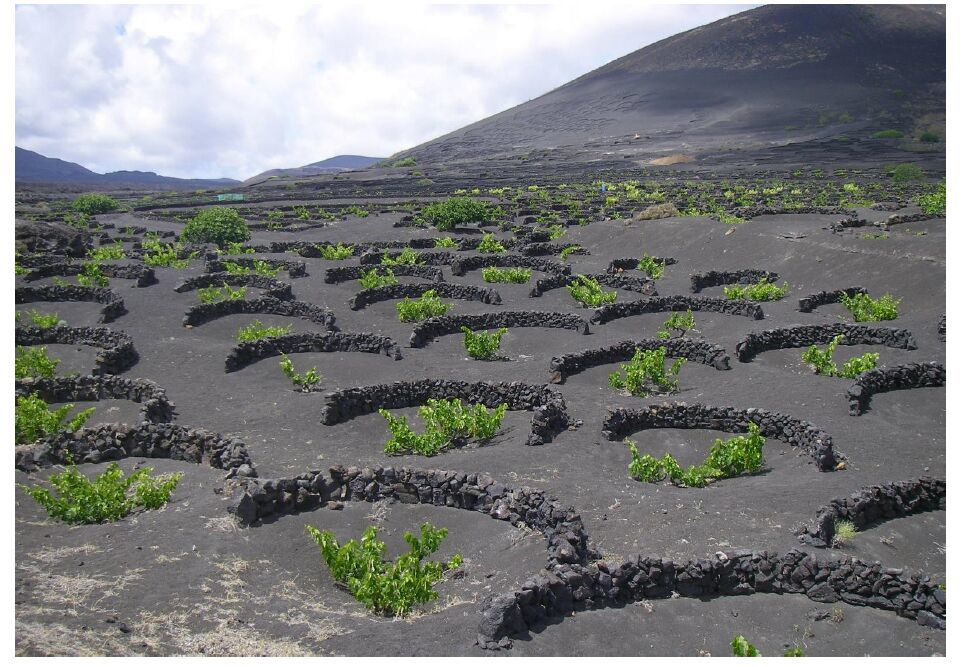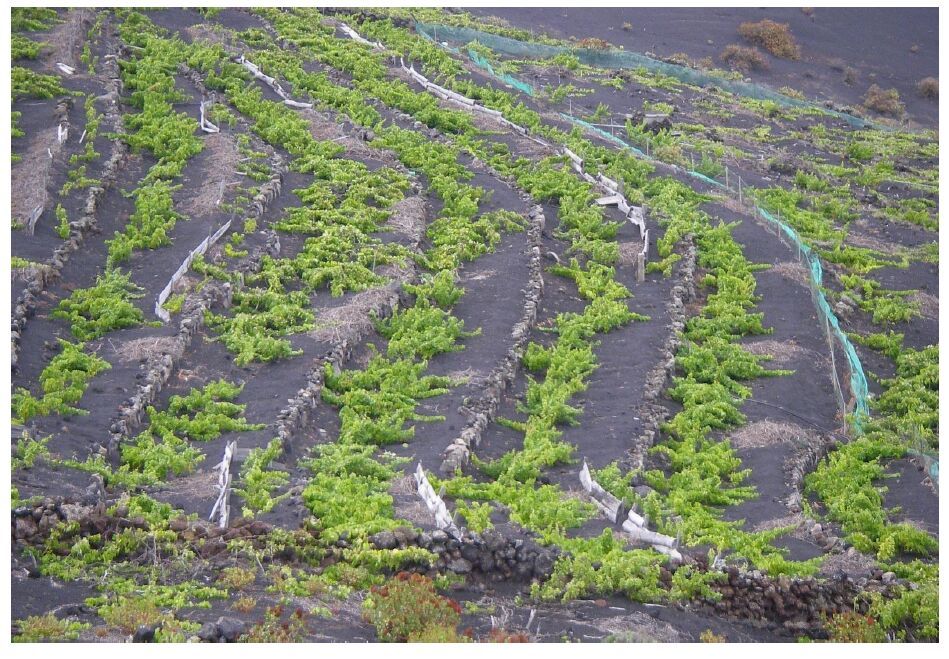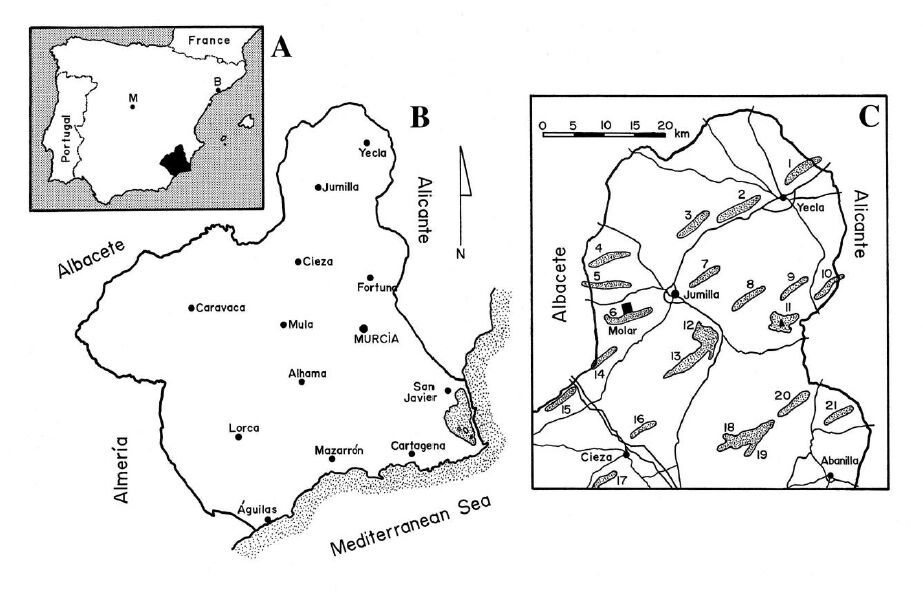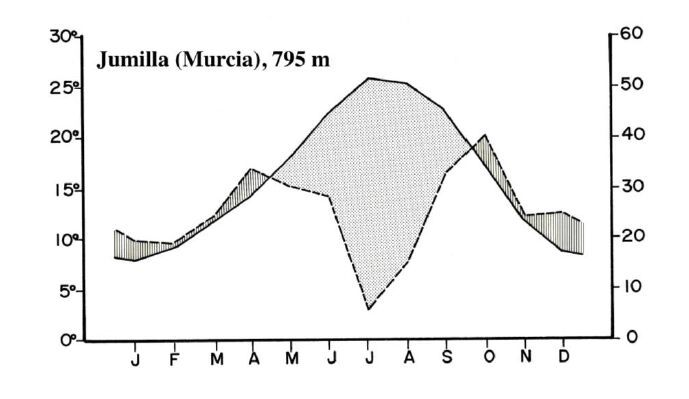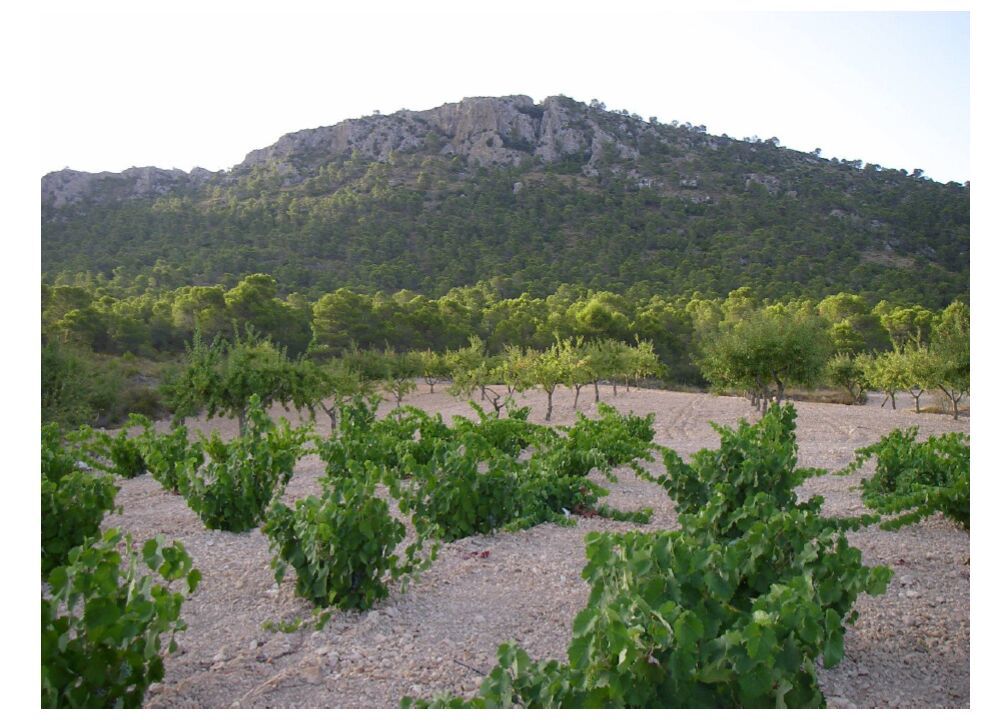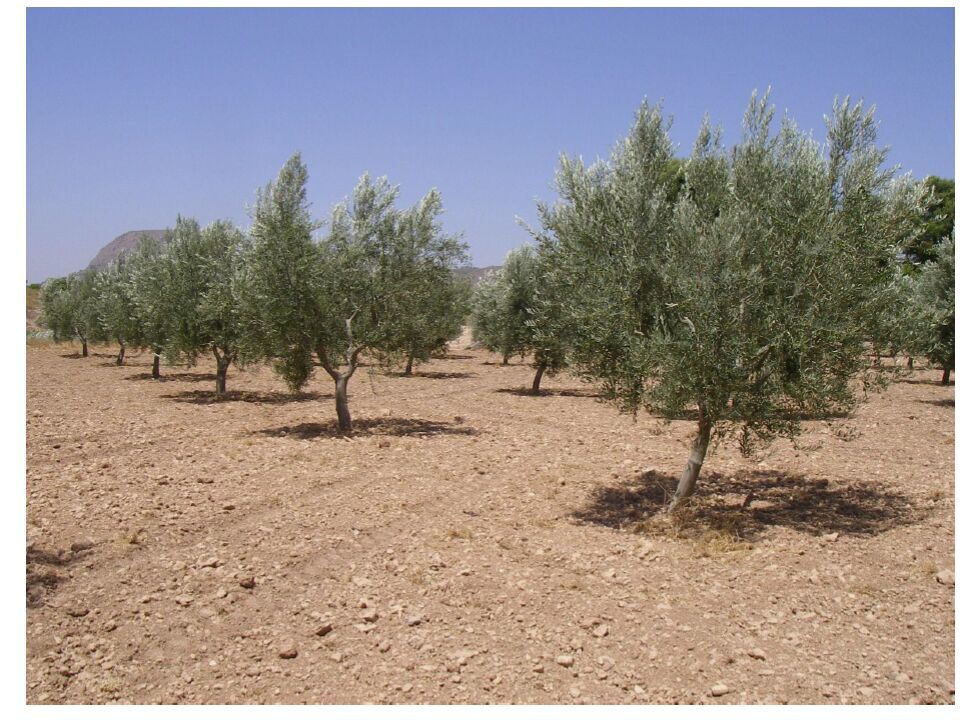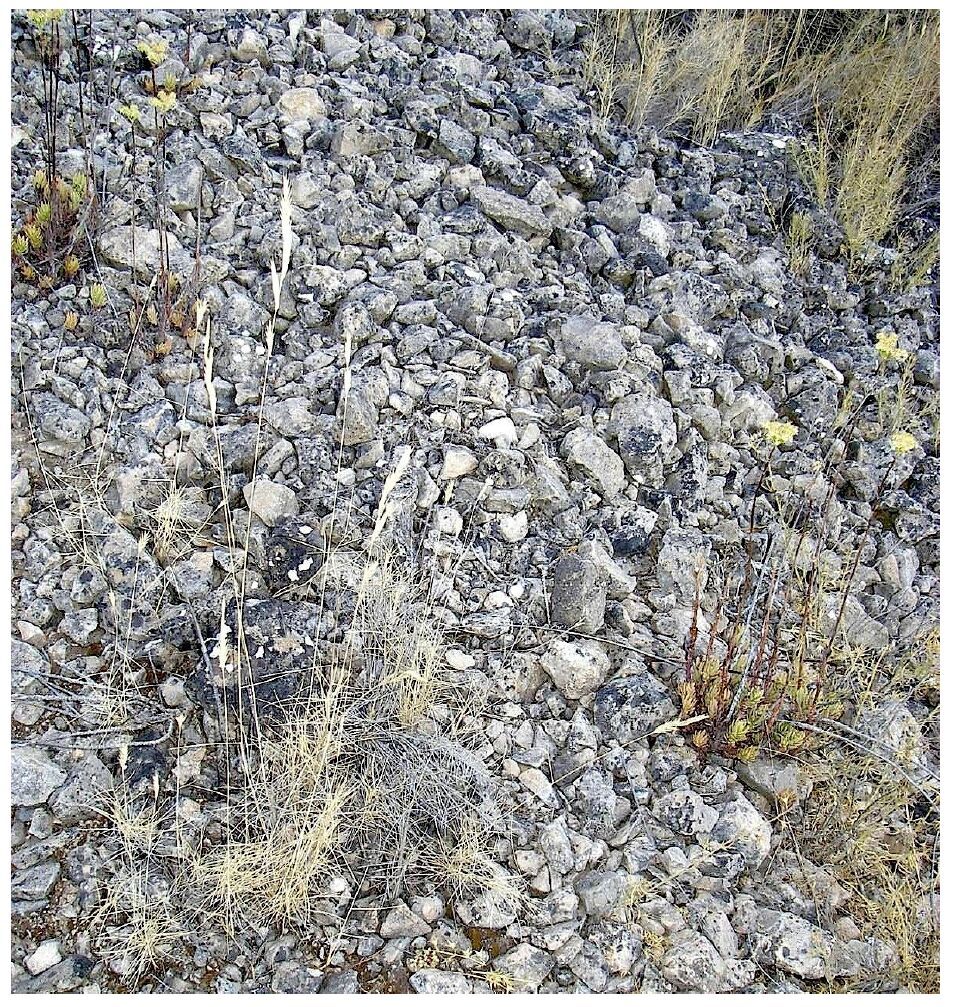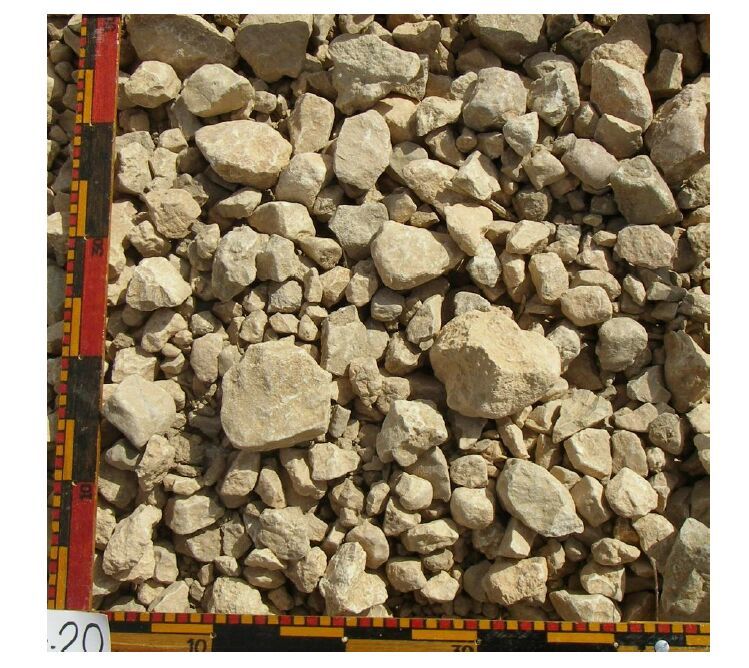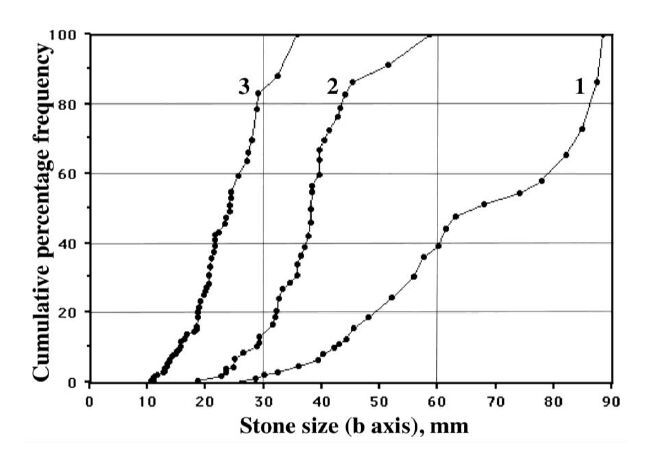|
[1]
|
Poesen JW, Lavee H (1994) Rock fragments in top soils: significance and processes. Catena 23: 1-28. doi: 10.1016/0341-8162(94)90050-7

|
|
[2]
|
Poesen JW, Torri D, Bunte K (1994) Effect of rock fragments on soil erosion by water at different spatial scales: a review. Catena 23: 141-166. doi: 10.1016/0341-8162(94)90058-2

|
|
[3]
|
Pérez FL (2009) Phytogeomorphic influence of stone covers and boulders on plant distribution and slope processes in high-mountain areas. Geogr Compass 3: 1-30. doi: 10.1111/j.1749-8198.2008.00200.x

|
|
[4]
|
Doolittle WE (1998) Innovation and diffusion of sand- and gravel-mulch agriculture in the American Southwest: a product of the eruption of Sunset Crater. Quaternaire 9: 61-69. doi: 10.3406/quate.1998.2107

|
|
[5]
|
Doolittle WE (2000) Cultivated landscapes of native North America. Oxford: Oxford University Press.
|
|
[6]
|
Gale WJ, McColl RW, Fang X (1993) Sandy fields traditional farming for water conservation in China. J Soil Water Conserv 48: 474-477.
|
|
[7]
|
Araña V, López J (1973) Volcanismo. Dinámica y petrología de sus productos. Madrid: Colegio universitario de Ediciones Istmo.
|
|
[8]
|
Tejedor M, Jiménez CC, Díaz F (2003) Volcanic materials as mulches for water conservation. Geoderma 117: 283-295. doi: 10.1016/S0016-7061(03)00129-0

|
|
[9]
|
Tejedor M, Jiménez CC, Díaz F (2004) Dry farming with soils under natural tephra cover in Lanzarote, Spain. Soil Use Manag 20: 360-362. doi: 10.1079/SUM2004268

|
|
[10]
|
Nachtergaele J (1998) Gravel mulching in vineyards of southern Switzerland. Soil Till Res 46: 51-59. doi: 10.1016/S0167-1987(98)80107-4

|
|
[11]
|
Alexander WD (1870) On the crater of Haleakala, island of Maui, Hawaiian group. Am J Sci Arts 49: 43-48.
|
|
[12]
|
Tansley AG (1911) Types of British vegetation. Cambridge: Cambridge University Press.
|
|
[13]
|
Weberbauer A (1911) Die Pflanzenwelt der peruanischen Anden. In: Engler, A, Drude, O. (eds), Die Vegetation der Erde, Vol. 12. Leipzig: Wilhelm Engelmann, 1-355.
|
|
[14]
|
Weaver JE (1919) The ecological relations of roots. Publ Carnegie Inst Washington, Washington DC 286: 1-128.
|
|
[15]
|
Pérez FL (1991) Soil moisture and the distribution of giant Andean rosettes on talus slopes of a desert paramo. Clim Res 1: 217-231. doi: 10.3354/cr001217

|
|
[16]
|
Best E (1976) Maori agriculture. Wellington, New Zealand: AR Shearer.
|
|
[17]
|
Lightfoot DR (1994) Morphology and ecology of lithic-mulch agriculture. Geogr Rev 84: 172-185. doi: 10.2307/215329

|
|
[18]
|
Poesen JW, Lavee H (1997) How efficient were ancient rainwater harvesting systems in the Negev Desert, Israel? Bull Séanc Acad r Sci d’Outre-mer Meded Zitt K Acad oversee wet 43: 405-419.
|
|
[19]
|
Frankel C (2011) Terre de vignes. Paris: Ed du Seuil.
|
|
[20]
|
Huggett JM (2006) Geology and wine: a review. Proc Geol Assoc 117: 239-247. doi: 10.1016/S0016-7878(06)80012-X

|
|
[21]
|
White RE (2015) Understanding vineyard soils, 2nd ed. Oxford: Oxford Univ. Press.
|
|
[22]
|
Robinson J (2003) Jancis Robinson wine course: a guide to the world of wine, 3rd ed. New York: Abbeville Press.
|
|
[23]
|
Krushelnycky PD, Loope LL, Giambelluca TW, et al. (2013) Climate-associated population declines reverse recovery and threaten future of an iconic high-elevation plant. Glob Chang Biol 19: 911-922. doi: 10.1111/gcb.12111

|
|
[24]
|
Krushelnycky PD, Starr F, Starr K, et al. (2016) Change in trade wind inversion frequency implicated in the decline of an alpine plant. Clim Chang Response 3: 1-13. doi: 10.1186/s40665-016-0015-2

|
|
[25]
|
Cao G, Giambelluca TW (2007) Inversion variability in the Hawaiian trade wind regime. J Clim 20: 1145-1160. doi: 10.1175/JCLI4033.1

|
|
[26]
|
Loope LL, Giambelluca TW (1998) Vulnerability of island tropical montane cloud forests to climate change, with special reference to east Maui, Hawaii. Clim Chang 39: 503-517, doi: 10.1023/A:1005372118420

|
|
[27]
|
Giambelluca TW, Díaz HF, Luke MSA (2008) Secular temperature changes in Hawai’i. Geophys Res Lett 35: L12702.
|
|
[28]
|
Ruiz Carrascal D, Arroyave MP, Gutierrez-Lagoueyte ME, et al. (2011) Increased climatic stress on high-Andean ecosystems in the Cordillera Central of Colombia. In: Herzog, S.K., Martínez, R., Jørgensen, P.M., Tiessen, H. (eds), Climate change and biodiversity in the tropical Andes. Inter-Am Inst Glob Chang Res, 182-190.
|
|
[29]
|
Marengo JA, Pabón JD, Díaz A, et al. (2011) Climate change: evidence and future scenarios for the Andean region. In: Herzog, S.K., Martínez, R., Jørgensen, P.M., Tiessen, H. (eds), Climate change and biodiversity in the tropical Andes. Inter-Am Inst Glob Chang Res, 110-127.
|
|
[30]
|
Young B, Young KR, Josse C (2011) Vulnerability of tropical Andean ecosystems to climate change. In: Herzog, S.K., Martínez, R., Jørgensen, P.M., Tiessen, H. (eds), Climate change and biodiversity in the tropical Andes. Inter-Am Inst Glob Chang Res, 170-181.
|
|
[31]
|
Díaz HF, Bradley RS (1997) Temperature variations during the last century at high elevation sites. Clim Chang 36: 253-279.
|
|
[32]
|
Hernández-Carrión E (2005) Evolución histórica de los vinos de Jumilla. Rev Murciana Antropol 12: 249-261.
|
|
[33]
|
Atlas Global de la región de Murcia. 2015. Available from: www.atlasdemurcia.com
|
|
[34]
|
Oberlander TM (1989) Slope and pediment systems. In: Thomas, D.S.G. (ed), Arid zone geomorphology. London: Bellhaven, 56-84.
|
|
[35]
|
White K (2006) Glacis d’érosion. In: Goudie, A.S. (ed), Encyclopedia of Geomorphology. London: Routledge, 469-470.
|
|
[36]
|
Instituto Geológico y Minero de España (1981) Mapa Geológico de España, Hoja Jumilla, 2a ser, 1a. edn. Escala 1:50.000. Serv Pub Min Ind Energía.
|
|
[37]
|
ISRIC-FAO (2007) Base referencial mundial del recurso suelo, 2nd ed. Informes sobre recursos mundiales de suelos N° 103, FAO, Roma.
|
|
[38]
|
Castillo VM, Gómez Plaza A, Martínez-Mena M, et al. (2000) Respuesta hidrológica en medios semiáridos: las cuencas experimentales de la Sierra del Picarcho, Murcia (España). Cuad Invest Geogr 26: 81-94.
|
|
[39]
|
Soil Survey Staff (2014) Keys to soil taxonomy, 12th ed. US Department of Agriculture, Nature Resource Conservation Service, Washington DC.
|
|
[40]
|
Albaladejo J, Martínez-Mena M, Roldan A, et al. (1998) Soil degradation and its impact of desertification: a research design for Mediterranean environments. Soil Techn 4: 169-174.
|
|
[41]
|
Rivas-Martínez S, Rivas-Saenz S. Worldwide bioclimatic classification system, phytosociological research center, Spain. 1996-2015. Available from: http://www.globalbioclimatics.org
|
|
[42]
|
Martínez-Carrión JM, Medina-Albaladejo FJ, Ramon-Muñoz JM (2010) La vitivinicultura y la valorización de su patrimonio industrial, cultural y natural. Areas Rev Internac Cienc Soc 29: 148-155.
|
|
[43]
|
Oestreicher A (2005) La filoxera en España. Bases para su estudio y consecuencias socio-económicas en la Región de Murcia. Rev Murciana Antropol 12: 199-208.
|
|
[44]
|
Oestreicher A (1996) La crisis filoxerica en España (estudio comparativo sobre las consecuencias socio-económicas de la Filoxera en algunas regiones vitivinícolas españolas). Hispania LVI/2, 193: 587-622.
|
|
[45]
|
Piqueras Haba J (2005) La Filoxera en España y su difusion espacial: 1878-1926. Cuad Geogr 77: 101-136.
|
|
[46]
|
Poesen JW, van Wesemael B, Govers G, et al. (1997) Patterns of rock fragment cover generated by tillage erosion. Geomorphology 18: 183-197. doi: 10.1016/S0169-555X(96)00025-6

|
|
[47]
|
Poesen JW, van Wesemael B, Bunte K, et al. (1998) Variation of rock fragment cover and size along semiarid hillslopes: a case study from southeast Spain. Geomorphology 23: 323-335. doi: 10.1016/S0169-555X(98)00013-0

|
|
[48]
|
Pérez FL (2012) Biogeomorphical influence of slope processes and sedimentology on vascular talus vegetation in the southern Cascades, California. Geomorphology 138: 29-48. doi: 10.1016/j.geomorph.2011.08.021

|
|
[49]
|
Pérez FL (2015) Biogeomorphic influence of soil depth to bedrock, volcanic ash soils, and surface tephra on silversword distribution, Haleakalā Crater (Maui, Hawai’i). Geomorphology 243: 75-86. doi: 10.1016/j.geomorph.2015.04.029

|
|
[50]
|
Navarro Lozano J, Herrero C, Hernández E, et al. (1989) Jumilla. Excmo Ayuntamiento de Jumilla, Murcia: Ed Evergráficas.
|
|
[51]
|
Albaladejo J, Chisci G, Gabriels D, et al. (1998a) Soil degradation and desertification induced by vegetation removal in a semiarid environment. Soil Use Manag 14: 1-5.
|
|
[52]
|
Albaladejo J (1990) Impact of degradation processes on soil quality in arid Mediterranean environments. In: Rubio, J.L., Rickson, R.J. (eds), Strategies to combat desertification in Mediterranean Europe. Commission of European Communities, Brussels –Luxembourg, 193-215.
|
|
[53]
|
Grove AT, Rackham O (2003) The nature of Mediterranean Europe: an ecological history. New Haven, CT: Yale University Press.
|
|
[54]
|
Carniel P, Scheidegger AE (1974) Morphometry of an alpine scree cone. Riv Ital Geofis 23: 95-100.
|
|
[55]
|
van Steijn H, Bertran P, Francou B, et al. (1995) Models for the genetic and environmental interpretation of stratified slope deposits: a review. Permafr Perigl Proc 6: 125-146. doi: 10.1002/ppp.3430060210

|
|
[56]
|
Pérez FL (1998) Talus fabric, clast morphology, and botanical indicators of slope processes on the Chaos Crags (California Cascades), U.S.A. Géogr Phys Quatern 52: 1-22.
|
|
[57]
|
van Wesemael B, Mulligan M, Poesen JW (2001) Spatial patterns in water use efficiency created by intensive cultivation on semi-arid hillslopes. In: Stott, D.E., Mohtar, R.H., Steinhardt, G.C. (eds), Sustaining the global farm. 10th Int. Soil Conservation Organization Meeting, Purdue University, Indiana, USA, 1128-1133.
|
|
[58]
|
van Wesemael B, Poesen JW, de Figueiredo T (1995) Effects of rock fragments on physical degradation of cultivated soils by rainfall. Soil Till Res 33: 229-250. doi: 10.1016/0167-1987(94)00439-L

|
|
[59]
|
Brakensiek DL, Rawls WJ (1994) Soil containing rock fragments: effects on infiltration. Catena 23: 99-110. doi: 10.1016/0341-8162(94)90056-6

|
|
[60]
|
Wilcox BP, Wood MK, Tromble JM (1988) Factors influencing infiltrability of semiarid mountain slopes. J Range Manag 31: 197-206.
|
|
[61]
|
Pérez FL (1998) Conservation of soil moisture by different stone covers on alpine talus slopes (Lassen, California). Catena 33: 155-177. doi: 10.1016/S0341-8162(98)00091-5

|
|
[62]
|
Dadkhah M, Gifford GF (1980) Influence of vegetation, rock cover, and trampling on infiltration rates and sediment production. Water Resour Bull 16: 979-986. doi: 10.1111/j.1752-1688.1980.tb02537.x

|
|
[63]
|
van Wesemael B, Poesen JW, Kosmas CS et al. (1996) Evaporation from cultivated soils containing rock fragments. J Hydrol 182: 65-82. doi: 10.1016/0022-1694(95)02931-1

|
|
[64]
|
Pérez FL (2009) The role of tephra covers on soil moisture conservation at Haleakala’s crater (Maui, Hawai’i). Catena 76: 191-205. doi: 10.1016/j.catena.2008.11.007

|
|
[65]
|
Kemper WD, Nicks AD, Corey AT (1994) Accumulation of water in soils under gravel and sand mulches. Soil Sci Soc Am J 58: 56-63.
|
|
[66]
|
Yuan C, Lei T, Mao L, et al. (2009). Soil surface evaporation processes under mulches of different sized gravel. Catena 78: 117-121. doi: 10.1016/j.catena.2009.03.002

|
|
[67]
|
Groenevelt P, van Straaten P, Rasiah V, et al. (1989) Modification in evaporation parameters by rock mulches. Soil Tech 2: 279-285. doi: 10.1016/0933-3630(89)90012-3

|
|
[68]
|
Pérez FL (2000) The influence of surface volcaniclastic layers from Haleakala (Maui, Hawaii) on soil water conservation. Catena 38: 301-332. doi: 10.1016/S0341-8162(99)00076-4

|
|
[69]
|
Othieno CO (1980) Effect of mulches on soil water content and water status of tea plants in Kenya. Exp Agric 16: 295-302. doi: 10.1017/S0014479700011054

|
|
[70]
|
Othieno CO, Ahn PM (1980) Effect of mulches on soil temperature and growth of tea plants in Kenya. Exp Agric 16: 287-294. doi: 10.1017/S0014479700011042

|
|
[71]
|
Woldeab A, Assefa A, Yematawork A, et al. (1994) Report on the results of the Ethiopia-Canada Agrogeology Project - Rock Mulch Report (IDRC Project 88-1032. University Guelph, Guelph, Canada, 1-76.
|
|
[72]
|
Dwairi IM (2000) Using volcanic tuff as mulch to reduce moisture stress and increase soil productivity in arid areas. In: Freshwater resources and the rehabilitation of degraded areas in the drylands. Proc N’Djamena, Chad 2000, 60-64.
|
|
[73]
|
Díaz F, Jiménez CC, Tejedor M (2005) Influence of the thickness and grain size of tephra mulch on soil water evaporation. Agric Water Manag 74: 47-55. doi: 10.1016/j.agwat.2004.10.011

|
|
[74]
|
Tejedor M, Jiménez CC, Díaz F (2002) Soil moisture regime changes in tephra-mulched soils: implications for soil taxonomy. Soil Sci Soc Am J 66: 202-206. doi: 10.2136/sssaj2002.2020

|
|
[75]
|
Modaihsh AS, Horton R, Kirkham D (1985) Soil water evaporation suppression by sand mulches. Soil Sci 139: 357-361. doi: 10.1097/00010694-198504000-00010

|
|
[76]
|
Keller M (2015) The Science of Grapevines. Amsterdam: Elsevier.
|
|
[77]
|
Poesen JW, Ingelmo-Sánchez F, Mücher H (1990) The hydrological response of soil surfaces to rainfall as affected by cover and position of rock fragments in the top layer. Earth Surf Proc Landf 15: 653-671. doi: 10.1002/esp.3290150707

|
|
[78]
|
Poesen JW, Ingelmo-Sánchez F (1992) Runoff and sediment yield from topsoil with different porosity as affected by rock fragment cover and position. Catena 19: 451-474. doi: 10.1016/0341-8162(92)90044-C

|
|
[79]
|
Fleskens L, Stroosnijder L (2007) Is soil erosion in olive groves as bad as often claimed? Geoderma 141: 260-271. doi: 10.1016/j.geoderma.2007.06.009

|
|
[80]
|
Mehuys GR, Stolzy LH, Lete J (1975) Temperature distributions under stones submitted to a diurnal heat wave. Soil Sci 120: 437-441. doi: 10.1097/00010694-197512000-00005

|
|
[81]
|
Hernández-Moreno JM, Tejedor M, Jiménez CC (2007) Effects of land-use on soil degradation and restoration in the Canary Islands. In: Arnalds, O., Bartoli, F., Buurman, P., Oskarsson, H., Stoops, G., García-Rodeja, E. (eds), Soils of volcanic regions in Europe. Berlin: Springer, 565-579.
|
|
[82]
|
Fairbourn ML (1973) Effect of gravel mulch on crop yields. Agron J 65: 925-928. doi: 10.2134/agronj1973.00021962006500060024x

|
|
[83]
|
Jury WA, Bellantuoni B (1976) Heat and water movement under surface rocks in a field soil: I. Thermal effects. Soil Sci Soc Am J 40: 505-509. doi: 10.2136/sssaj1976.03615995004000040018x

|
|
[84]
|
Larmuth J (1976) Temperatures beneath stones used as daytime retreats by desert animals. J Arid Environ 1: 35-40.
|
|
[85]
|
Munsell Soil Color Charts (1992) New York: Macbeth, Kollmorgen Instruments.
|
|
[86]
|
Tejedor M, Jiménez CC, Díaz F (2003) Use of volcanic mulch to rehabilitate saline-sodic soils. Soil Sci Soc Am J 67: 1856-1861. doi: 10.2136/sssaj2003.1856

|
|
[87]
|
Smart DR, Schwass E, Lakso A, et al. (2006) Grapevine rooting patterns: a comprehensive analysis and review. Am J Enol Vitic 57: 89-104.
|
|
[88]
|
Haynes SJ (1999) Geology and wine 1. Concept of terroir and the role of geology. Geosci Can 26: 190-194.
|
|
[89]
|
Oñate J, Pou A (1996) Temperature variations in Spain since 1901: a preliminary analysis. Int J Clim 16: 805-815.
|
|
[90]
|
de Castro M, Martín-Vide J, Alonso S (2005) The climate of Spain: past, present and scenarios for the 21st century. In: Moreno, J.M. (ed), A preliminary assessment of the impacts in Spain due to the effects of climate change. Madrid: Min Envir, 1-62.
|
|
[91]
|
Resco Sánchez P, Bardají I, Iglesias A, et al. (2014) Vulnerabilidad del viñedo español al cambio climático. In: Castillo, J.S., Compés, R. (eds), La economía del vino en España y el mundo. Serie Economía. Almería, Spain: Cajamar, Caja Rural, 245-267.
|
|
[92]
|
Pérez FF, Boscolo R (eds) (2010) Climate in Spain: past, present and future. Regional climate change assessment report. Red temática Clivar-España.
|
|
[93]
|
Grupo Meteorología de Santander, Proyecto nacional ESCENA. 2009-2012. Available from: www.meteo.unican.es/es/projects/escena
|
|
[94]
|
Horcas R, Rasilla D, Fernández-García F (2001) Temperature variations in the Segura River Basin. An exploratory analysis. In: Brunet, M., López, D. (eds), Detecting and modeling regional climate change. Berlin: Springer, 133-142.
|
|
[95]
|
Malheiro AC, Santos JA, Fraga H, et al. (2010) Climate change scenarios applied to viticultural zoning in Europe. Clim Res 43: 163-177. doi: 10.3354/cr00918

|
|
[96]
|
Ramos MC, Jones GV, Martinez-Casasnovas JA (2008) Structure and trends in climate parameters affecting winegrape production in northeast Spain. Clim Res 38: 1-15. doi: 10.3354/cr00759

|
|
[97]
|
Jones GV, Davis RE (2000) Climate influences on grapevine phenology, grape composition, and wine production and quality for Bordeaux, France. Am J Enol Vitic 51: 249-261.
|
|
[98]
|
Dobrei A, Nistor E, Sala F, et al. (2015) Tillage practices in the context of climate change and a sustainable viticulture. Not Sci Biol 7: 500-504.
|
|
[99]
|
Webb LB, Whetton PH, Bhend J, et al. (2012) Earlier wine-grape ripening driven by climatic warming and drying and management practices. Nat Clim Chang 2: 259-264. doi: 10.1038/nclimate1417

|
|
[100]
|
Laget F, Tondut JL, Deloire A, et al. (2008) Climate trends in a specific Mediterranean viticultural area between 1950 and 2006. J Int Sci Vigne Vin 42: 113-123.
|
|
[101]
|
Webb LB, Whetton PH, Barlow EWR (2011) Observed trends in winegrape maturity in Australia. Glob Change Biol 17: 2707-2719. doi: 10.1111/j.1365-2486.2011.02434.x

|
|
[102]
|
Bindi M, Fibbi L, Gozzini B, et al. (1996) Modelling the impact of future climate scenarios on yield and yield variability of grapevine. Clim Res 7: 213-224. doi: 10.3354/cr007213

|
|
[103]
|
Ashenfelter O, Storchmann K (2014) Wine and climate change. Work Pap 152: 1-43.
|
|
[104]
|
Jones GV, Reid R, Vilks A (2012) Climate, grapes, and wine: structure and suitability in a variable and changing climate. In: Dougherty, P.H. (ed), The geography of wine regions, terroir and techniques. Amsterdam: Springer, 109-133.
|
|
[105]
|
Molina JL, García Aróstegui JL, Benavente J, et al. (2009) Aquifers overexploitation in SE Spain: a proposal for the integrated analysis of water management. Water Resour Manag 23: 2737-2760. doi: 10.1007/s11269-009-9406-5

|
|
[106]
|
Andreu M, Alcalá FJ, Vallejos A, et al. (2011) Recharge to mountainous carbonated aquifers in SE Spain: different approaches and new challenges. J Arid Environ 75: 1262-1270. doi: 10.1016/j.jaridenv.2011.01.011

|
|
[107]
|
Rodriguez Estrella T (2006) Hidrogeología de la region de Murcia. In: Conesa García, C (ed), El medio físico de la region de Murcia. Murcia: Serv Publ Univ Murcia, 143-182.
|
|
[108]
|
Morales Yago FJ (2015) El agua en Yecla (Murcia): pasado y futuro de un recurso imprescindible para el desarrollo local. Bolet Asoc Géogr Españ 68: 301-323.
|
|
[109]
|
Aguilera H, Murillo JM (2009) The effect of possible climate change on natural groundwater recharge based on a simple model: a study of four karstic aquifers in SE Spain. Environ Geol 57: 963-974. doi: 10.1007/s00254-008-1381-2

|
|
[110]
|
Jiménez-Fernández P, Jiménez-Gavilán P (2015) Modelling of last hypothesis of climate change impacts on water resources in Sierra de las Cabras aquifer (Southern Spain). In: Andreu, J.M., Solera, A., Paredes-Arquiola, J., Haro-Monteagudo, D., Van Lanen, H.A.J. (eds), Drought: research and science-policy interfacing. London: CRC Press, Taylor & Francis, 57-64.
|
|
[111]
|
Contreras S, Hunink JE (2015) Drought effects on rainfed agriculture using standardized indices: A case study in SE Spain. In: Andreu, J.M., Solera, A., Paredes-Arquiola, J., Haro-Monteagudo, D., Van Lanen, H.A.J. (eds), Drought: research and science-policy interfacing. London: CRC Press, Taylor & Francis, 65-70.
|
|
[112]
|
Agnew CT (2000) Using the SPI to identify drought. Drought Netw News 12: 6-12.
|
|
[113]
|
Kroodsma DA, Field CB (2006) Carbon sequestration in California agriculture, 1980-2000. Ecol Appl 16: 1975-1985.
|
|
[114]
|
Kjelgren R (2010) Isohydric and anisohydric water use. Considerations in species selection for the Great Green Wall of Africa. In: Dia, A, Duponnois, R. (eds), Le projet majeur africain de la Grande Muraille Verte. Paris: IRD ed, 63-72.
|
|
[115]
|
Sade N, Gebremedhin A, Moshelion M (2012) Risk-king plants. Anisohydric behavior as a stress-resistance trait. Plant Signal Behav 7: 767-770.
|
|
[116]
|
Vilagrosa A, Chirino E, Peguero-Pina JJ, et al. (2012) Xylem cavitation and embolism in plants living in water-limited ecosystems. In: Aroca, E. (ed), Plant responses to drought stress. Berlin: Springer, 63-109.
|









 DownLoad:
DownLoad: 

